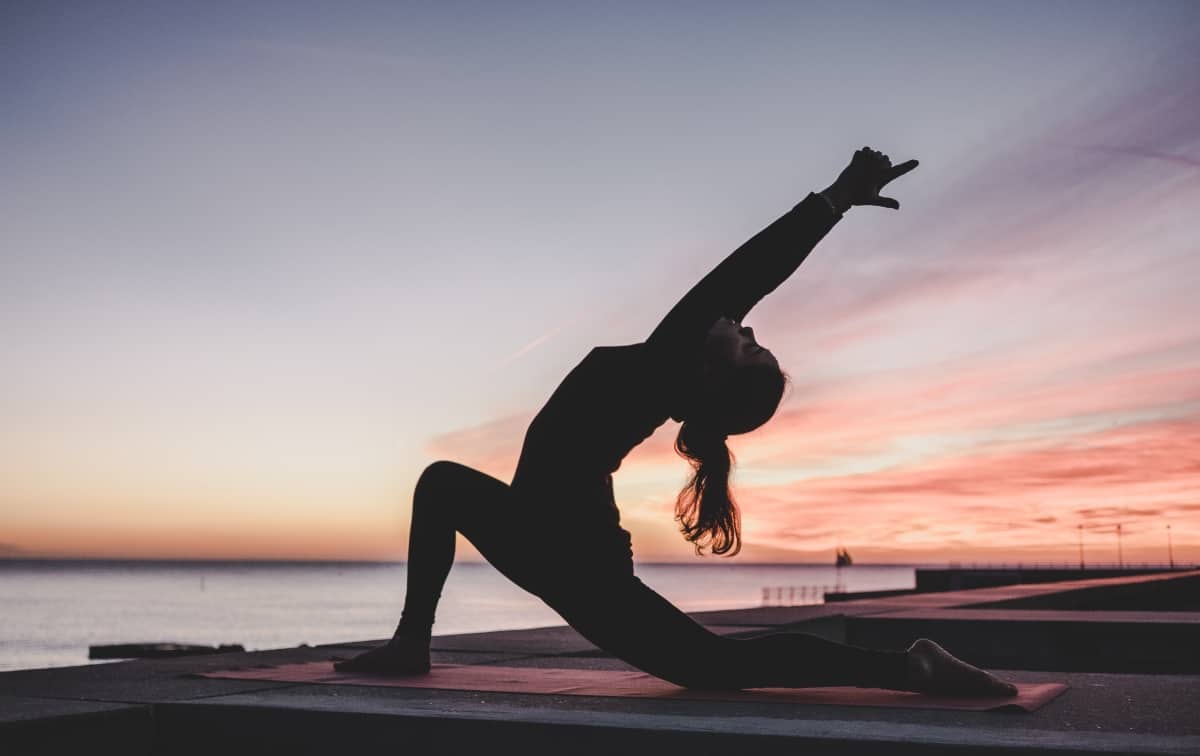Introduction
Ardha Chandrasana is a modern standing yoga posture. We could not find any documentation for this pose in classical yoga texts. Yet Sritattvanidhi, a 19th Century treatise on South Indian Iconography, mentions the name of this yoga pose for an altogether different pose that resembles Tree Pose.
At least three different types of yoga postures exist in this name. The three variations belong to three styles of yoga: Iyengar Yoga, Bihar School Of Yoga, and Bikram Yoga. Also, Swami Yogesvarananda describes a version different from the three variations mentioned above.
This yoga pose is a part of the Moon Salutation Series taught by Bihar School Of Yoga.
This article discusses the meaning, steps, and benefits of this posture regarding the style of Bihar School Of Yoga, a derivative style of Sivananda Yoga. However, it also gives a brief description of other styles of yoga apropos Ardha Chandrasana.
Ardha Chandrasana Information
| Pose Name | Ardha Chandrasana |
| Sanskrit Name | अर्धचन्द्रासन |
| IAST | ardha candrāsana |
| English Name | Half Moon Pose |
| Origin | Modern Yoga Period |
| Level | Basic |
| Group | Anjaneyasana |
| Type | Standing Yoga Pose |
Ardha Chandrasana Meaning
अर्ध (Ardha) means a half. चन्द्र (Candra) is the moon. आसन (āsana) means a yoga pose. Hence the straight forward translation is Half Moon Pose. Some people call it Crescent Moon Pose.
Ardha Chandrasana Procedure
Precautions and Contraindications
Pregnant women should avoid this posture. Also, it is contraindicated for persons having health conditions like Sciatica, lumbago, hernia, and lower back issues.
Preparatory Poses
The practice of following postures help the beginners to master this pose.
- Triangle Pose
- Anjaneyasana
- Wheel Pose
Ardha Chandrasana Steps
Step 1
Stand erect. Take a step forward with your left leg. Bend the left knee and stretch the right leg backward fully. Place the right toes and knee on the floor. To get the balance, place the palms on the floor.
Step 2
Keep the torso and head straight. Take a couple of deep breaths. Inhale and slowly raise the arms. Press the palms together and place them before the chest in Anjali Mudra. Take a couple of deep breaths.
Step 3
Inhale and raise the arms over the head without releasing Anjali Mudra. Bend the upper torso further back by simultaneously bending the arms back to the convenient maximum level. Ensure that arms are in Anjali Mudra. The arms, back, and the right leg should form a curve like a half-moon. Breath slowly.
Step 4
Keep the position as long as it is comfortable. After releasing the pose, go to Corpse Pose for one or two minutes. Then repeat the steps by changing the legs.
Duration
For beginners, 30 to 60 seconds duration is enough. Advanced yogis can extent the posture for up to five minutes. To get the optimum benefits, one should practice for at least two minutes.
Follow Up Poses
On completion of this pose, one should continue the practice with any of the forward bending poses mentioned below.
Ardha Chandrasana Benefits
The benefits of Half Moon Pose includes the following.
- It improves the flexibility of the spine. Hence the regular practice of this pose helps to avoid spinal issues like Sciatica Pain and Lumbago.
- This pose stretches the shoulder muscles. It improves the strength and pliability of the shoulder joints.
- This pose stretches the upper chest region. Thus, it helps in health conditions like Asthma and Chronic Obstructive Pulmonary Disease.
- It boosts the whole digestive system. As a result, it helps in conditions like indigestion, constipation, GERD, and Irritable Bowel Syndrome.
- Moreover, it is a posture that helps hypertensive patients.
- Also, it stretches the neck that improves flexibility. In short, it enhances the health of the Skeletal system as a whole.
Half Moon Pose Variants
Ardha Chandrasana in Iyengar Yoga

Half Moon Pose in Iyengar Yoga is entirely different from the pose described already. It is the extension of Trikonasana and lokks similar to Eka Padasana,
First Assume Triangle Pose and raise the left leg horizontally. Keep the right leg on the floor. Lean forward and touch the floor with right-hand fingers. Then raise the other hand. Fix the eyesight on the tip of the left hand. This is Half Moon Pose as per Iyengar Yoga.
The benefits of this posture are the same as Triangle Pose.
Ardha Chandrasana in Bikram Yoga

In Bikram Yoga, Half Moon Pose is different from the two poses mentioned above. It is similar to Tadasana. Unlike Tree Pose, the upper body and arms are bent on either side.
The benefits are the same as that of Tree Pose.

